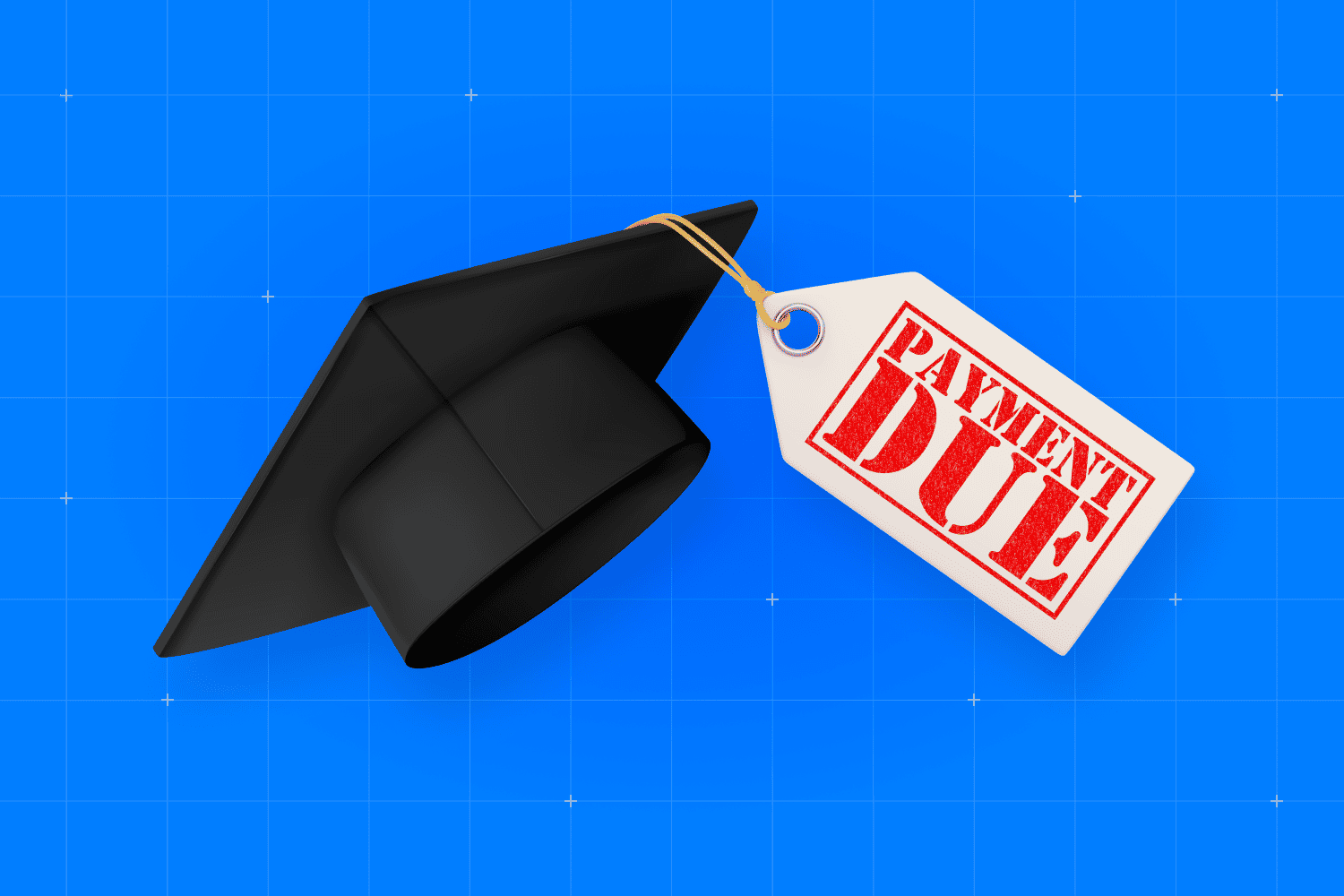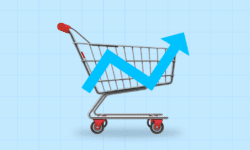During periods of economic instability, the consumer and retail industry usually bears the initial and most substantial brunt. This sector proves highly responsive to almost every market event, serving as a crucial barometer for gauging the overall state of the economy. With inflated prices and astronomical interest rates already burdening consumers, there’s little capital that Americans can spend on non-essentials. However, this little to non-existent budget is about to be cut once again for millions.
This October, tens of millions of student loan borrowers resumed repayments after a three-year hiatus, alerting financial leaders to closely monitor the situation and gauge the potential impact on consumer spending. The suspension of payments and interest, initiated at the inception of the COVID-19 pandemic, provided an opportunity for Americans to stockpile cash and spend more rather than save.
However, with the resumption of debt payments this fall, borrowers—apprehensive about meeting their student loan obligations—have already scaled back on discretionary spending. Now, CFOs from major companies are taking note of how student debt payments will not just affect their consumers, but their QoQ and YoY fiscal performance.
Below, we flesh out the current state of the student loan landscape, how the impending election will shape the system, and how this all affects the consumer and retail industry.
The Student Debt Loan Landscape
Today, approximately 43.4 million Americans are holders of federal student loans, constituting a collective debt of $1.63 trillion, as reported by the National Student Loan Data System. Before the pandemic, student loan debt experienced the swiftest growth among household debts, surging from a 3% share in 2003 to 11% in 2018, according to data from the Federal Reserve Bank of New York. The payment hiatus played a significant role in curbing this growth. As of this past June, outstanding student loans made up slightly over 9% of the total household debt, with mortgages understandably comprising the majority at 70%.
Simultaneously, over the past three years, Americans experienced an increase in wealth. This was attributed to reduced spending, financial stimulus checks aiding in debt repayment, growing wages, a thriving job market, and a refinancing boom that generated $430 billion for 14 million households, as indicated by research from the New York Fed. In fact, some institutions are not expecting the resumption of student loans to take a major economic toll. Oxford Economics estimates that the impact to economic growth will be relatively small, subtracting 0.1% from GDP this year and 0.3% next year.
Even though President Joe Biden’s student loan forgiveness program was blocked by the Supreme Court this past June, his administration has approved the cancellation of more than $116 billion of student loan debt for over 3.4 million people—about 1.1 million of whom are borrowers who were misled by a for-profit college and granted relief under a program known as borrower defense to repayment.
The Politics and Alternative Paths of Education
Presidential elections are nearly a year away, and Biden’s term has only reemphasized how deeply intertwined the cost of education and an administration are. Republicans and Democrats have shared a longstanding understanding that the student loan system requires reform, and while there is consensus on certain aspects, such as the excessively high cost of U.S. colleges and the complexity of the student loan system for borrowers, agreement dissipates rapidly when it comes to proposing and implementing solutions.
“We have a current president whose wife, Dr. Biden, is a community college professor, and that’s very different than previous administrations. The role that politics plays in influencing education cannot be understated when you’re thinking about projecting for the future because in the past year, the changes have been huge across the board, policies from student loan debt potentially to Title IX issues, to tons of different things. They’re so politically motivated. That has to be in the equation when you’re thinking about the future of education or at least the next four years or next eight years. That’s still political.”
– American Public University System | Former Director of Faculty and Professor
As decades-long debates amongst politicians to reform the college loan system persist— with no agreed resolution in sight—students continue to face challenges in securing funds for loans and tuition costs amid an economic downturn. But Insider is reporting a more cost-effective way Gen-Zers are choosing to secure higher education: community college. Enrollment numbers rose this past spring for the first time in a decade, with financial pressure as the main reason high school students are opting for associate degrees over four-year universities. To further aid in offering affordable education, major companies are partnering with community colleges to provide students additional opportunities.
“This idea of not to assume that student loan debt, which is very different than my generation and to really think about some of these other opportunities, be it go to a community college and be trained up in a trade or something that you can teach a couple of classes like coding and then do a job, there’s a huge shift away from loans.”
“I think that the student loan industry itself for those people who have loans is going to come to a head and that’s going to further push students away from not wanting to take out those big loans. We see this with law school. Law school attendance has dropped. I believe part of that is because of the loans you need to take out to complete that education. The role that loans will play, or the lack of them, will be another huge disruption, I think, the next disruption in education moving forward. That’s my thought.”
– American Public University System | Former Director of Faculty and Professor
Forecasting the Impact to Consumer Spending
While nearly 45 million Americans have some sort of student loans, the anticipated resumption of payments is projected to reduce total annual consumer spending by approximately 0.4% to 0.6%—a “relatively small” percentage, says Wells Fargo economist Shannon Seery. However, C-Suite leaders are still concerned with how these numbers could take a toll on their earnings. Within the last 18 months, we noticed a 220.26% increase in event transcripts mentioning “student loans” within the Consumer Discretionary sector.
Major companies are responsible for this uptick. Gap and Foot Locker are just two of many that have adjusted their forecasts, citing the uncertain economic environment and the impending resumption of student loan repayments as contributing factors. Macy’s executives have also expressed concern about increased financial pressure on consumers due to factors like higher interest rates on various loans.
“We are all well aware of the mixed economic data and uncertain consumer trends in the marketplace, including the new dynamic regarding student loan repayments beginning in the third quarter. As a result, we continue to be prudent in our approach to planning, in light of what remains an uncertain macro environment and choppy consumer backdrop…We now anticipate fiscal 2023 net sales, inclusive of the 53rd week, to be down generally in the mid-single-digit range compared to $15.6 billion in net sales last year and similar to our first half 2023 sales performance.”
– The Gap | Q2 2024 Earnings Call
“In addition to the headwinds discussed on prior earnings calls, the expiration of student loan forgiveness beginning in October, higher interest rate levels and lower new job creation are all new pressures on the consumer. While we had contemplated these factors when providing an annual outlook on our last earnings call, it is still unknown how consumers will respond to them, especially after so many months of increased pressures.”
– Macy’s | Q2 2024 Earnings Call
Despite the looming loan payments, some companies are not anticipating a significant decline in consumer spending. Chipotle, for instance, is considering potential price adjustments later in the year but believes consumers will likely maintain spending on items like burritos.
“They took a look at 18- to 34-year olds that actually have student debt, right? And what we found is Chipotle was the best value proposition among that universe. So one of the things we’re seeing is whatever situation you’re in, whether it’s low income, higher income with some student debt, we continue to be a strong value proposition, regardless where you look across the consumer segments.”
– Chipotle Mexican Grill, Inc. | Q3 2023 Earnings Call
Coty, a beauty and fragrance company, plans to implement mid-single-digit price increases in its first quarter but expects no major pullback in consumer spending as borrowers begin repaying their loans.
Keeping Tabs on Consumer Spending
To understand the mindset of the everyday consumer and forecast where discretionary spending is heading, it’s crucial to be on top of every new development within your market. You need AI search technology to help you speed up your ability to track new market events and key trends so you can better inform your decision-making and take the lead.
AlphaSense offers an extensive universe of company filings, earnings transcripts, expert interview transcripts, news, trade journals, and equity research—paired with proprietary AI-based search technology—to pinpoint valuable insights in seconds.
Start your free trial with AlphaSense today.




